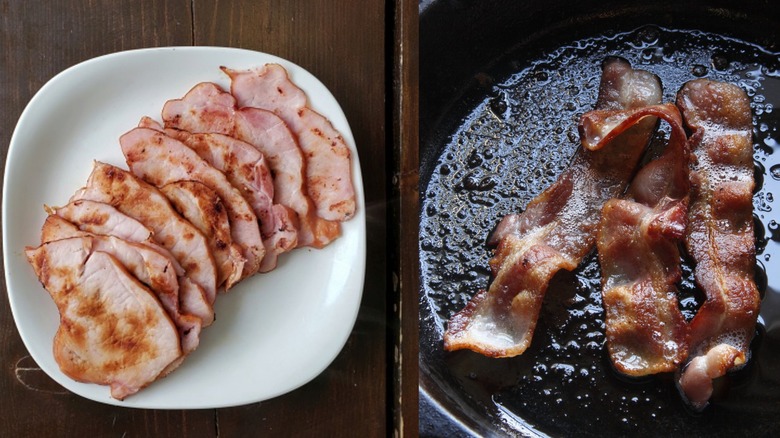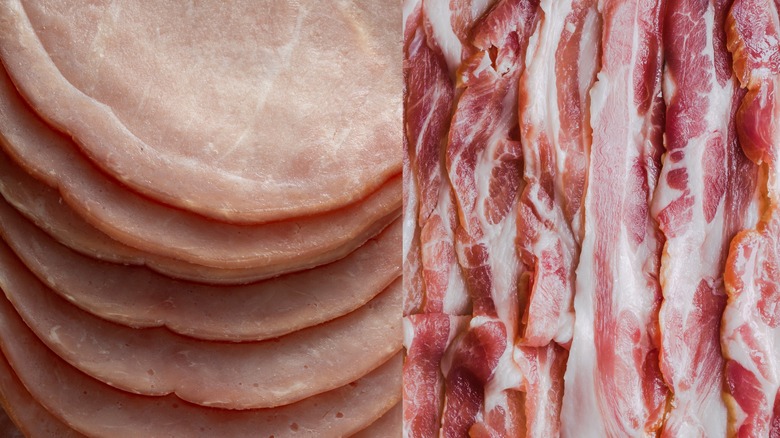Canadian Vs American Bacon: What's The Difference?
Americans love bacon. Sizzling strips of crispy pork goodness grace our television screens in nearly every burger chain and IHOP ad. It's a feast for the senses and as close to ubiquitous acclaim as any food can get. There's another meat on our breakfast menus that bears nearly the same name — Canadian bacon — which, despite its famous role in how Eggs Benedict became a breakfast classic, is rarely celebrated in the States. For those of us who only picture those sizzling strips when we hear the word "bacon," Canadian bacon seems like an entirely different concept. Sure enough, both the cut of pork and preparation for making Canadian bacon are different from American bacon, and the main similarity is how they are eaten.
The most important difference between American bacon and Canadian bacon is what part of the pig they are made from. American bacon is made from pork belly, but Canadian bacon is made from pork loin, which is the same part of the pig that British bacon comes from. Pork belly is a fatty cut, giving American bacon its characteristic white streaks. Pork loin is on the opposite end of the spectrum, being one of the leanest cuts of pork overall. One of the most notable differences between American and Canadian bacon is texture because American bacon's fat fries it to be crispy, while lean Canadian bacon is more tender and meaty. That's not the only difference, as the ways these two meats are processed make a big difference in flavor.
How Canadian bacon is made vs. American bacon
In terms of production processes, the one thing that American bacon and Canadian bacon have in common is that both of them are cured meats. Curing is a process that involves treating meat with two things: Salt and nitrates. Nitrates are the controversial ingredients that make bacon pink and are also found in Canadian bacon and other cured meats. The purpose of curing meats is to draw out moisture that would otherwise allow harmful bacteria to flourish. This greatly extends the shelf life of meat, and drawing out moisture also makes the flavor more concentrated.
Where Canadian bacon and American bacon differ is what gets done after curing. American bacon is typically cold smoked, meaning it is smoked at very low temperatures, in the range of 68-86 degrees Fahrenheit. Cold smoking infuses the bacon with a smoky flavor but doesn't actually cook it, which is why American bacon is raw when you buy it. Canadian bacon is also smoked, but unlike American bacon, it is smoked at high enough temperatures to cook it through, and it tastes more like ham. Canadian bacon is ready to eat when you buy it, even though you'll definitely want to heat it up in a pan before serving for a nice crispy texture.

